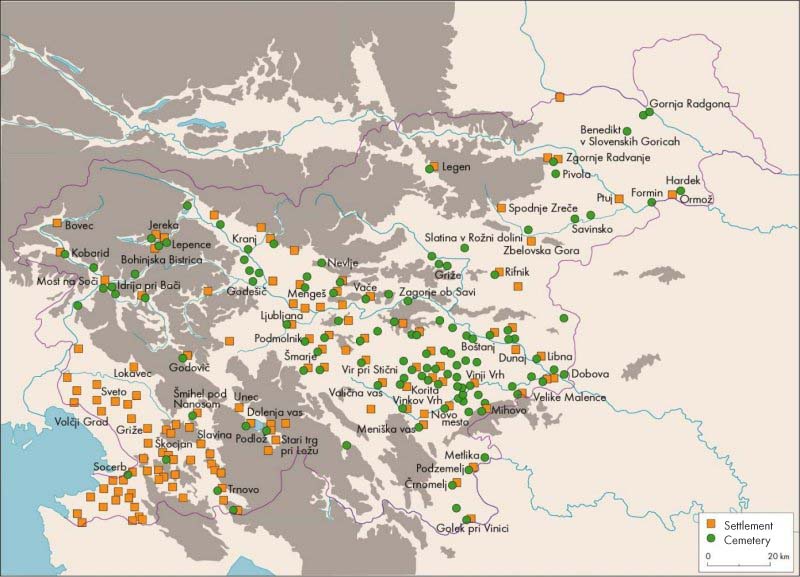|
PROJECTS
Social differentiation and cultural identities in the Iron Age on the territory of Slovenia
Starting-points:
As is indicated by archaeological evidence, the territory of present-day Slovenia was not culturally homogenous in prehistoric times. In the Iron Age several territorial communities had been formed. They were distinguished by different customs and material culture, as well as prosperity and settlement patterns. In the 1st millennium B.C. the process of social stratification can also be noticed. The differences are clearly expressed between the Early Iron Age communities in the Dolenjska region and along the Soča River. On the other side, both regions achieved one of the cultural and economic peaks in that time. The most eloquent information medium for studying social and cultural identities and specific regional characteristics are cemeteries. Concerning this, adequate field researches and a reliable and representative sample are of crucial importance for further comparative analyses. Another specific source for such kind of study is so-called Situlae Art with its iconography, which gives insight into ideology and life of the peoples, living in the Iron Age on the territory between the rivers Po and Danube.

Early Iron Age groups in Slovenia
State of research:
On the basis of up to date investigations the main cultural features of both areas in the 1st millennium B.C. has already been defined as well as the chronological framework of their development. The great part of archaeological material has been published. Typology of the most indicative archaeological finds was also done. Furthermore, some case-studies of social structure of the Iron Age communities and reconstruction of costumes were made, and also of settlement patterns and processes. From this point of view the co-called Dolenjska community is better researched owing to tumuli cemeteries with the warrior burials, the outstanding women costumes and the figural representations on the Situlae Art. However, the significant part of the archaeological material has not been analysed yet. In the case of the S. Lucia community grave goods do not show clear difference between male and female costumes, because no weapons were put into the graves during the Early Iron Age. This is the reason that social structure of the S. Lucia society has not been adequately researched yet; indeed it needs additional investigation.
Objective:
ne of the aims is to establish computer database of the most significant Early Iron Age grave contexts for further analyses. With the basic researches, comparative analyses and with new methodological approaches we intend to profound today’s knowledge about the prehistoric communities, about social differentiation and formation of cultural identities on the territory of today’s Slovenia.
Management and organization:
The project team will engage the researchers of the scientific research, education and museum institutions, whose interest is focused on the Bronze and Iron Age. These institutions assure support of project activities with their infrastructure such as expert libraries, computer and other technical facilities.
Results:
The database and digital ground plans of the case-study cemeteries will be available for further researches, comparative analyses and applications. It could be upgraded with records of other archaeological sites and regions. Results will be published in scientific paper, treatises and monographs and will contribute to scientific progress. They will be applied into scholarly and education contents, and also into the museums activities. They can be used for the popularization purposes such as the promotion of the Slovenian cultural heritages etc. Indirectly, they might significantly contribute towards understanding the actual problems of regionalization of Slovenia, since the role of the Slovenian territory in inter-regional connections and integration can only be understood in terms of (pre)historical development..
Project coordinator
Janez Dular
Researchers
Mateja Belak
Dragan Božič
Lucija Lavrenčič
Primož Pavlin
Sneža Tecco Hvala
Vojka Cestnik, Univerza v Ljubljani, Filozofska fakulteta,
Vesna Svetličič Turk, Narodni muzej Slovenije,
Ljubinka Teržan, Univerza v Ljubljani, Filozofska fakulteta,
Peter Turk, Narodni muzej Slovenije
Project no.
J6-4095
Duration
1.7.2011 - 30.6.2014
Top
|
 Institute of Archaeology
Institute of Archaeology